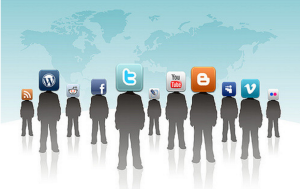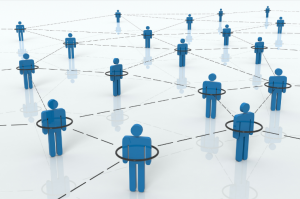Today, a person can spend a whole day interacting with tens of people, without actually seeing anyone.
From Snapchat and Instagram to Twitter and Facebook, worldwide millions of social interactions take place on the daily; however, they now take place behind screens.
Gone are the days of calling people on the phone to talk about when you wanted to meet up and spend time together. Face-to-face has been replaced with FaceTime and talking has been replaced with texts.

I remember a time when there was no social media– no smartphones. I would ride my bike down to a friend’s house, knock on the door and hope they could play.
Oh, how the times have changed.
Now, I watch my 12-year-old brother as he waits for friends to answer his strings of texts, snaps and FaceTimes.
Is this revolution of technology and social media affecting people’s individual growth and development?
Or, better yet, how is this revolution of technology and social media affecting people’s individual growth and development? Because it is definitely influencing development of the younger generations, Generation Z.
In 2015, Common Sense Media conducted a study that uncovered how much time teens and pre-teens spend engulfed in their devices.
According to the national survey, American children ages eight to 12 years old use media for an average of six hours a day. Teens ages 13 to 18 years old consume media for an average of nine hours a day.
That study alone shows that most individuals from eight to 18 spend more than a third of their day with their face towards a screen.
Within those hours of consumption are subtle alterations to the way teens and pre-teens see and respond to the world.
In 2016, UCLA held a study that looked at the ways media affected their perceptions.

When shown pictures, subjected by the analyzed individuals, that had high numbers of ‘likes,’ the part of their brain that correlates with reward circuitry, the nucleus accumbens, lit up.
In addition to reward, there was activity in the regions of the brain that have to do with visual attention and portions of the brain known as “the social brain.”
The region of the brain that links to reward is especially sensitive and moldable during adolescence.
Which, in turn, means that teens lead themselves to believe that “likes” are their reward and self-worth.
Living through this technological boom, I have seen either side of the coin.
While I miss the simplicity of a social media and smart phone free world, I understand the obsessive consumption with our world’s technological advances.
Every aspect of life is polluted with technology. With this infiltration, it is easy to bypass the ways that used to be tradition and adopt this new norm.
With the acceptance of this “norm” comes the abandonment of many key social skills, skills that are essential in the real world, as well as sustaining concrete relationships with others.

Technology is taking away the art of conversation, the art of listening. Eye contact, hand gestures and body language are slowing making an exit from our social interactions.
Why?
Because having our interactions take place across social media platforms has eliminated our ability to communicate face-to-face.
We rely on technology to communicate for us, in place of spoken word. Through technology, conversation and personal interaction is diminished. The quality of conversation between screens is not as rich as conversing with someone face-to-face.
We hide behind the screens in our pockets.


